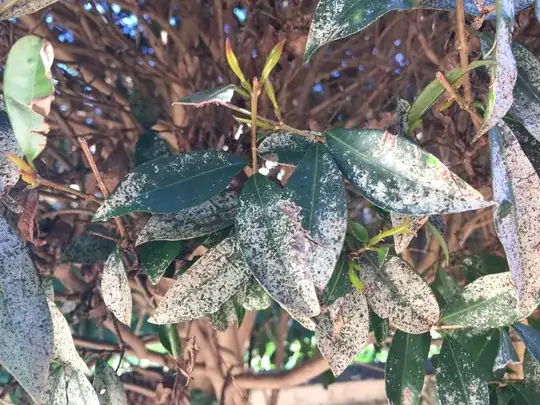This looks like a plant disease that has caused portions of the leaf to die, I suspect due to long term nutrient deficiency (nitrogen, potassium, phosphate).
Plants will sometimes sacrifice leaves in desperation to grow its fruit and seeds if it lacks enough nutrients.
3 years is a long time without any fertiliser for the plants.
Lack of nutrition leads to a weaker immune system.
You will need to remove the dead leaves as they are not helping your plants.
Make sure you leave the un diseased new shoots and leaves intact to allow further growth.
And choose a simple fish emulsion fertiliser ask for (NPK 5-1-1) as it will have 5 nitrogen 1 potassium 1 phosphate which will be a safe dose when diluted with clean water.
mix a small amount of the fertiliser with clean water (1spoon per litre) and feed the plants by pouring it around the base but not on it.
Do this for each plant once a month at first to avoid overdose as we still don't know the exact requirements of this plant.
For that reason I'm suggesting a light dose to begin with, you will be surprised just how little a plant needs to maintain its size and health.
Only do this during the growing season of that plant,
Plants will not require any feeding during their dormant period(usually when its colder around winter).
Caution as it smells like bad fish so do avoid getting it on your skin.
Feed your plants. especially during their growing season, at the very least once a year.
If that does not help then it could be something beyond my experience.
As mentioned by @bamboo, do check for insect infestation as they would be treated differently by using very diluted neem oil.
Simply mix a drop per 1 litre of water and spray all over the plant
Caution as it also smells bad like rotten garlic!
Nutrient deficiency could be due to many factors, one of which is nutrition lock out due to wrong PH from tap water but in this case from what you have said and from what I can see the soil seams to be poor in basic/essential plant nutrients.

![white-leaves[![][1]](../../images/3836218509.webp) ]3
]3